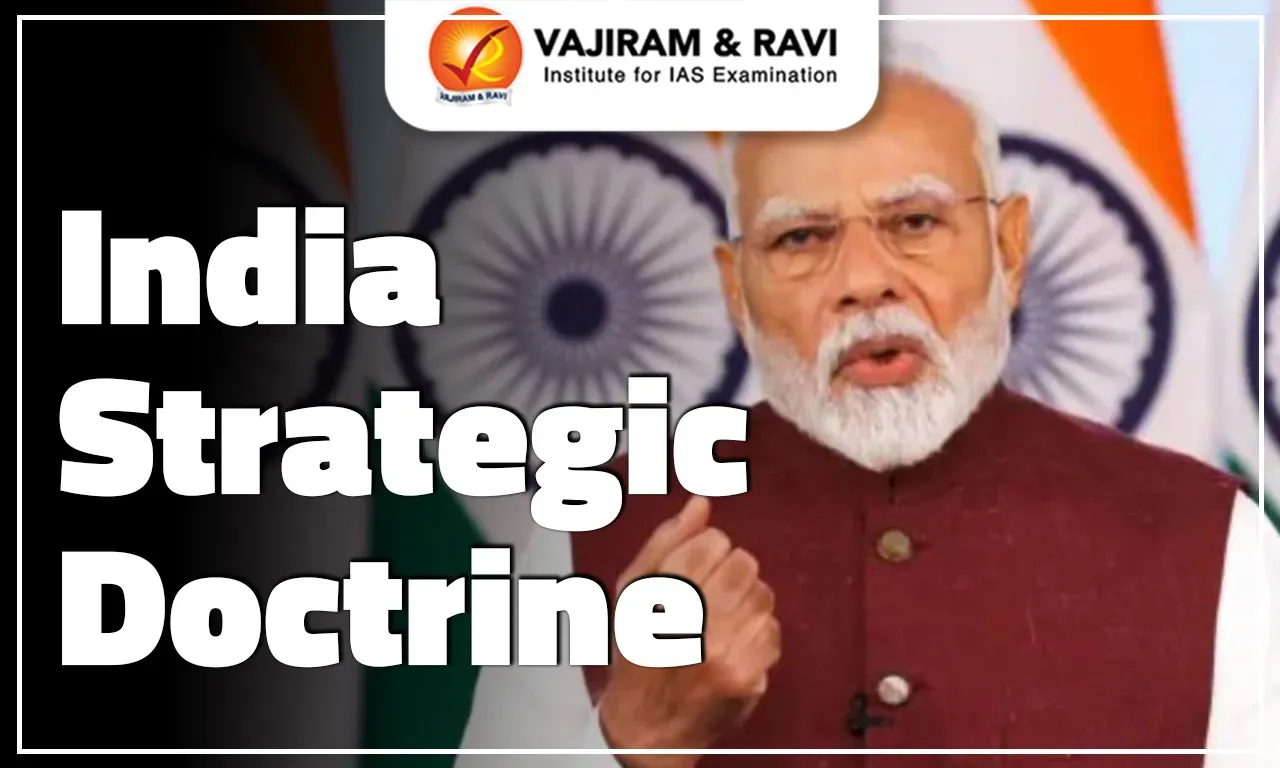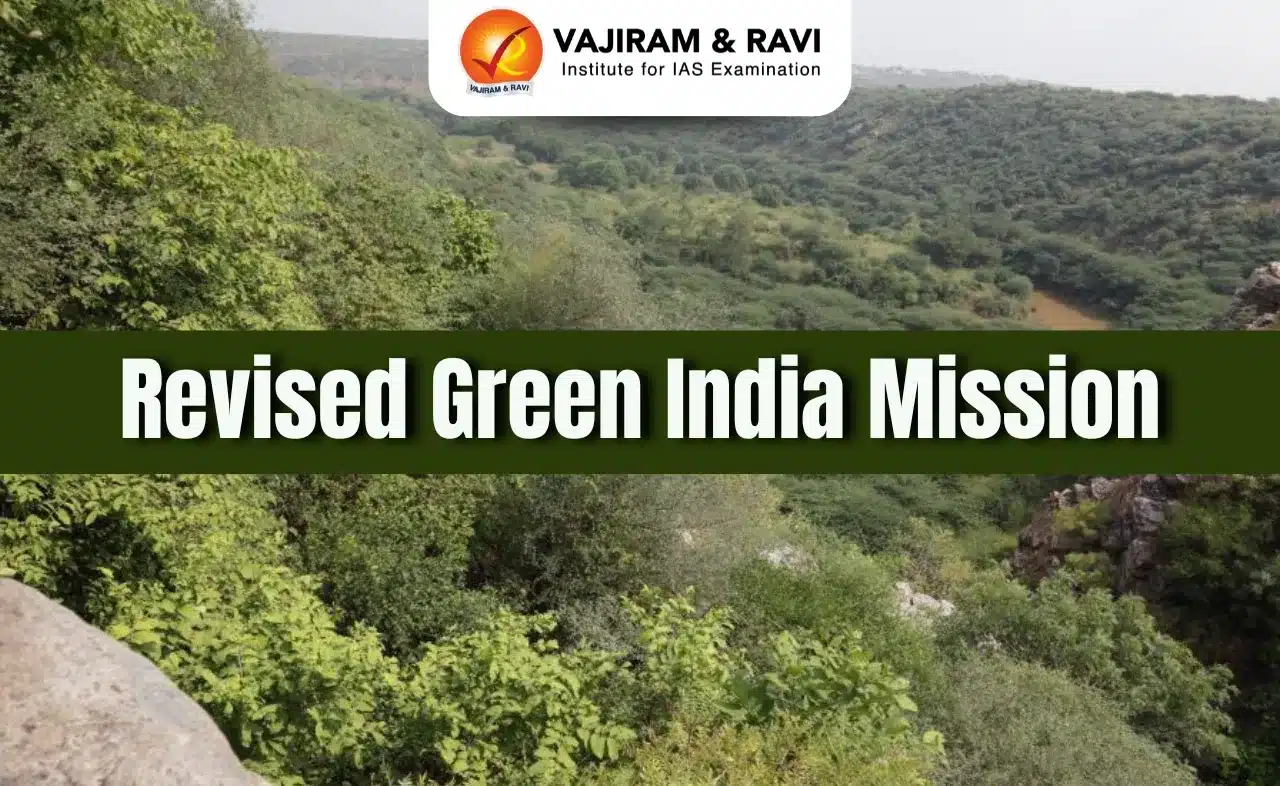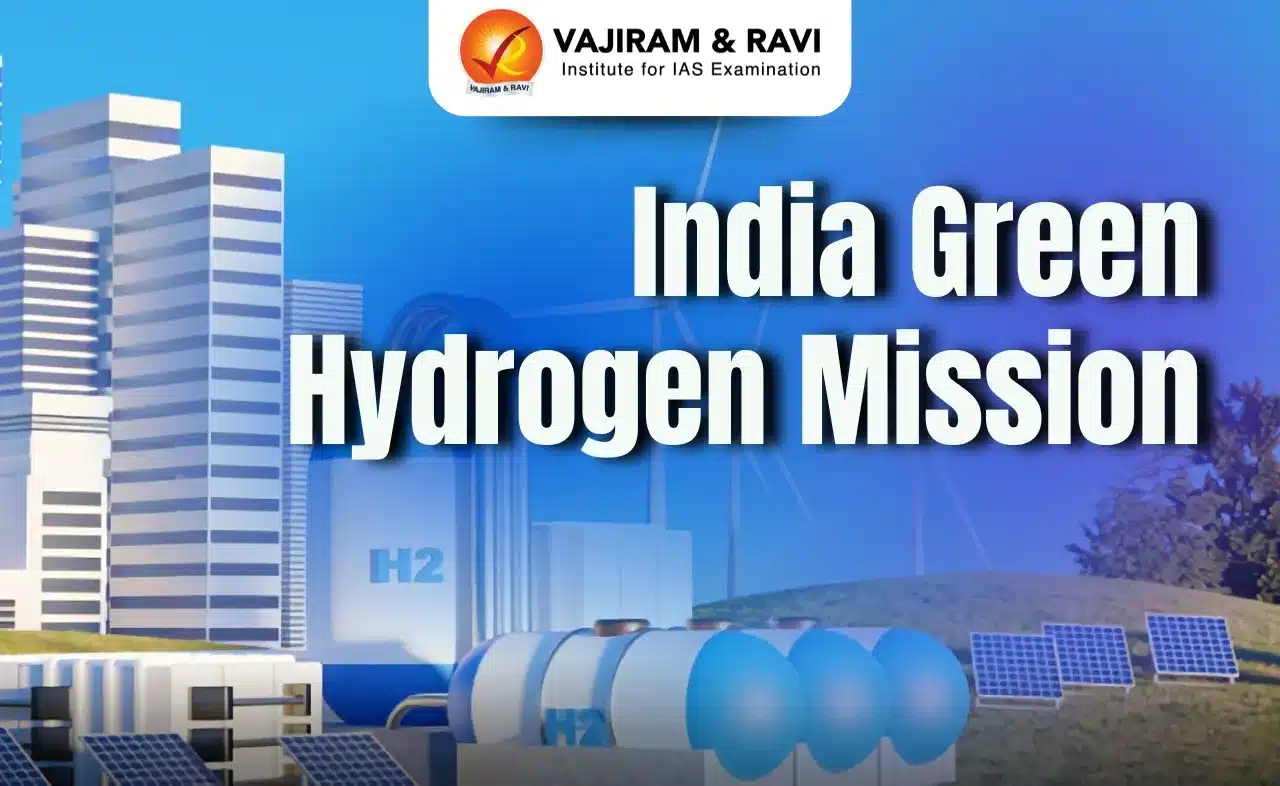What’s in Today’s Article?
- India Strategic Doctrine Latest News
- India’s Evolving Anti-Terror Doctrine
- Other Highlights of the Speech Delivered by PM Modi
- India Strategic Doctrine FAQs
India Strategic Doctrine Latest News
- PM Modi addressed the nation for the first time after Operation Sindoor, India’s most intense military action since Kargil. During his address, he outlined a new anti-terror doctrine.
- Building on the precedent set by the Uri and Balakot strikes, the doctrine is based on three pillars:
- India will respond to terrorism on its own terms;
- Nuclear threats will not deter India from acting;
- There will be no distinction between terrorists, their leaders, and the states that support them.
India’s Evolving Anti-Terror Doctrine
- Following Operation Sindoor, PM Modi announced a significant shift in India’s counter-terrorism policy.
- Building on the precedents set by the Uri surgical strikes (2016) and the Balakot airstrikes (2019), the new doctrine signals a bolder and more aggressive stance.
Three Core Principles of the New Doctrine
- Response on India’s Terms: India will choose the timing, nature, and scale of its response to terror attacks.
- No Tolerance for “Nuclear Blackmail”: India will not be deterred by Pakistan’s nuclear posturing.
- No Distinction Between Terrorists and State Sponsors: There will be no separation between terrorists, their masterminds, and the governments supporting them.
New Normal in India’s Response to Terror
- Operation Sindoor is positioned as a benchmark and a new standard in India’s fight against terrorism.
- This lowers the threshold for future Indian military responses and projects a higher degree of offensive readiness.
Framing India’s Fight in the Global War on Terror
- PM Modi linked India’s actions to the global anti-terror campaign, comparing the strikes against Jaish-e-Mohammed and Lashkar-e-Taiba to global responses to terror after 9/11.
- This positions India as a global stakeholder in counter-terrorism.
India’s Military Superiority Highlighted
- The PM praised India’s technological edge, highlighting the destruction of Pakistani drones and airbases using advanced air defence systems and precision missile strikes.
- He also highlighted India’s ability to strike deep inside Pakistan, damaging key airbases and exposing Pakistan’s vulnerabilities.
Decision to Pause: A Strategic Choice
- PM Modi defended the decision to halt military action after achieving key objectives, citing Pakistan’s appeal through diplomatic channels and its pledge to de-escalate.
International Messaging: “This is Not the Era of Terrorism”
- To counter accusations of war-mongering, Modi invoked his now-famous phrase, “This is not the era of war,” and adapted it: “This is also not the era of terrorism.”
- He called for global unity and zero tolerance against terrorism for a safer world.
Firm Red Lines on Talks with Pakistan
- India reaffirmed its long-standing position:
- No talks with Pakistan unless they are about terrorism and PoK.
- Terror and talks, trade, or even water cannot go together.
Other Highlights of the Speech Delivered by PM Modi
- Operation Sindoor: A Symbol of Justice
- Operation Sindoor is more than a military campaign — it symbolizes national resolve and emotional unity.
- PM described it as India’s commitment to justice after the Pahalgam terror attack.
- Suspension, Not Withdrawal
- Following heavy losses, Pakistan sought de-escalation. India agreed to suspend action after destroying major terror infrastructure, but Modi made it clear that future actions depend on Pakistan’s conduct.
- Full Freedom to Armed Forces
- Modi emphasized that Indian armed forces were given a free hand to act.
- Operation Sindoor now stands as a new counter-terrorism policy, showcasing India’s growing military independence and strategic assertiveness.
- Strong Message to Pakistan
- India reiterated its policy:
- No talks with Pakistan unless focused on terrorism or PoK.
- No trade or water-sharing under terror threats.
- Pakistan must dismantle its terror infrastructure or face destruction.
- India reiterated its policy:
- Peace Through Strength
- On Buddha Purnima, Modi invoked Lord Buddha’s message of peace, emphasizing that power is essential to protect peace.
- He said a strong India is critical to achieving Viksit Bharat (Developed India).
- Mastery of Modern Warfare
- India demonstrated 21st-century warfare capability in Operation Sindoor.
- Modi lauded the effectiveness of Made-in-India weapons and projected India as a future-ready military power.
- He reiterated that unity and zero tolerance for terror are India’s guiding principles for global peace.
India Strategic Doctrine FAQs
Q1. What is India’s Strategic Doctrine about?
Ans. It outlines India’s long-term approach to counterterrorism, aligning with global anti-terror frameworks while safeguarding national interests.
Q2. How does the doctrine affect India’s foreign policy?
Ans. It prioritizes international cooperation on counterterrorism, enhancing India’s global influence and partnerships with strategic allies.
Q3. What changes are expected in defense operations?
Ans. India’s defense forces will adopt integrated strategies combining surveillance, intelligence, and surgical operations to combat terrorism.
Q4. Why is global alignment important in this doctrine?
Ans. Global alignment ensures intelligence sharing, cross-border coordination, and better response to global terror threats.
Q5. How will this impact India’s internal security?
Ans. The doctrine strengthens internal surveillance and intelligence networks, boosting preparedness against domestic terror activities.
Last updated on June, 2025
→ UPSC Notification 2025 was released on 22nd January 2025.
→ UPSC Prelims Result 2025 is out now for the CSE held on 25 May 2025.
→ UPSC Prelims Question Paper 2025 and Unofficial Prelims Answer Key 2025 are available now.
→ UPSC Calendar 2026 is released on 15th May, 2025.
→ The UPSC Vacancy 2025 were released 1129, out of which 979 were for UPSC CSE and remaining 150 are for UPSC IFoS.
→ UPSC Mains 2025 will be conducted on 22nd August 2025.
→ UPSC Prelims 2026 will be conducted on 24th May, 2026 & UPSC Mains 2026 will be conducted on 21st August 2026.
→ The UPSC Selection Process is of 3 stages-Prelims, Mains and Interview.
→ UPSC Result 2024 is released with latest UPSC Marksheet 2024. Check Now!
→ UPSC Toppers List 2024 is released now. Shakti Dubey is UPSC AIR 1 2024 Topper.
→ Also check Best IAS Coaching in Delhi
























